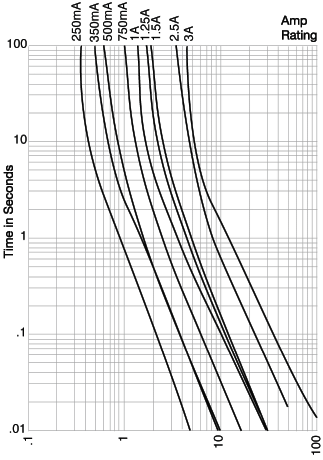Ummm, nope.
4×. ( I = E² / R )
Nope.
Lots of people think that a fuse acts like an overcurrent switch, that a 1A fuse is fine at 1A but will blow at 2A, 1.5A, 1.1A, whatever. It’s more like a lightbulb with a low lifetime when driven to overcurrent (’though to encourage blowing, now discourage).
Can’t find a nice text-based chart, but did find a graph. A normal medium-acting fuse can withstand 1.1× the rated current indefinitely, and time-to-blow just decreases with increasing current. You need something like 5× or more of the rated current to blow in a fractional-second.

Just like a lightbulb, resistance increases with temperature, so a cold soldering-iron will draw lots more current than when at steady-state temp. 4× the difference from 120V to 240V is nothing. To size-down a fuse to blow for sure at 240V (before the coil heats up sufficiently for the current to drop) will result in nuisance-blows at 120V just with repeated starts (integrated over time).
You wanna put in, say, a magnetic breaker to trip (pull-in current at X amps) at the “right” current, sure, but they’re pricey.
Depending on the kind, that could work, but they can be pricey.
Cheap thermal fuses work in hairdryers where you have airflow and can easily sense when output gets dangerously hot, but soldering irons are designed to get hot, really hot when cranked up, so it might get iffy unless you select the location and rating correctly, under the assumption that some dimwit will plug your 120V iron into 240V mains.